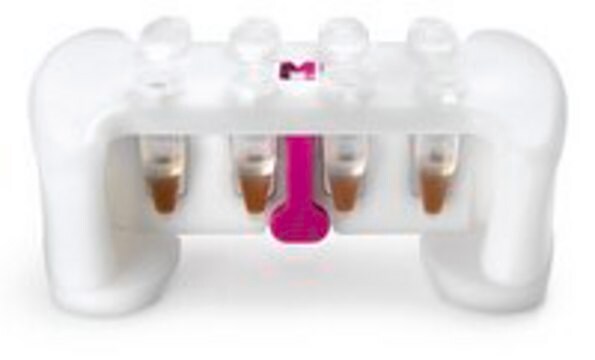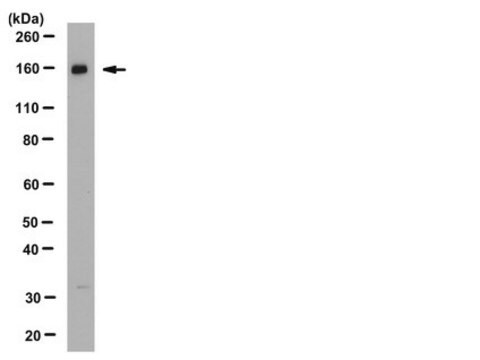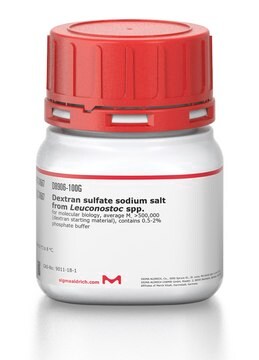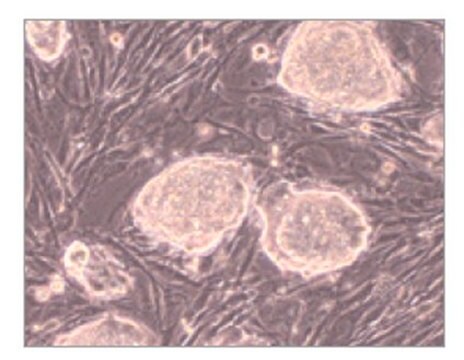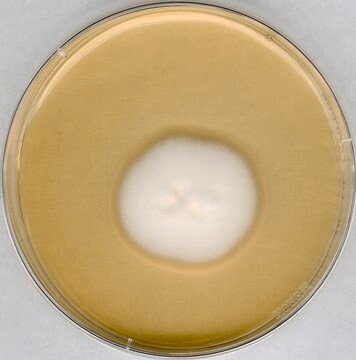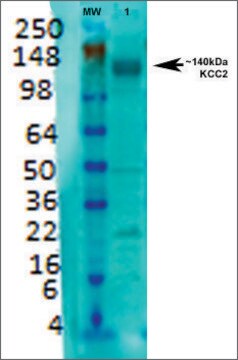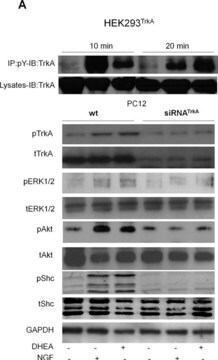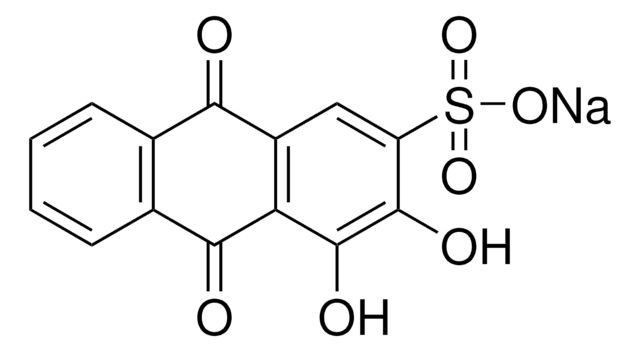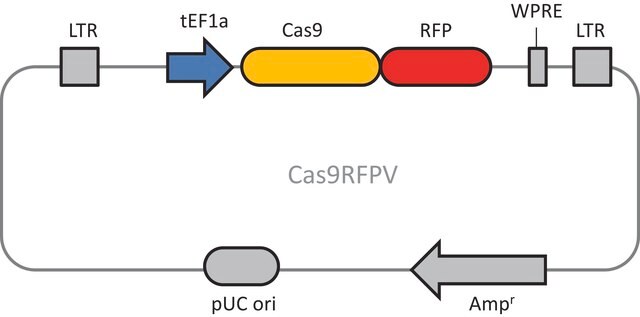AB3560P
Anti-Sodium Antibody, Potassium, Chloride Cotransporter 1
Chemicon®, from rabbit
Sinónimos:
Basolateral Na-K-Cl symporter, Bumetanide-sensitive sodium-(potassium)-chloride cotransporter 1, solute carrier family 12 sodium/potassium/chloride transporters), member 2
About This Item
Productos recomendados
origen biológico
rabbit
Nivel de calidad
forma del anticuerpo
affinity purified immunoglobulin
tipo de anticuerpo
primary antibodies
clon
polyclonal
purificado por
affinity chromatography
reactividad de especies
human, bovine, mouse, rat
fabricante / nombre comercial
Chemicon®
técnicas
ELISA: suitable
immunohistochemistry: suitable
western blot: suitable
Nº de acceso NCBI
Nº de acceso UniProt
Condiciones de envío
dry ice
modificación del objetivo postraduccional
unmodified
Información sobre el gen
human ... SLC12A2(6558)
Descripción general
Especificidad
Inmunógeno
Aplicación
It is recommended that the antibody be tried at 2-20 µg/mL on paraformaldehyde fixed tissue.
ELISA:
0.5-1.0 µg/mL of a previous lot was used with 1 µg/mL control peptide per well.
Optimal working dilutions must be determined by the end user.
Neuroscience
Ion Channels & Transporters
Calidad
Western Blot Analysis:
1:500 dilution detected NA+K+CL- COTRANS 1 on 10 µg of Rat Spinal Cord lysates.
Descripción de destino
Forma física
Almacenamiento y estabilidad
Handling Recommendations: Upon first thaw, and prior to removing the cap, centrifuge the vial and gently mix the solution. Aliquot into microcentrifuge tubes and store at -20°C. Avoid repeated freeze/thaw cycles, which may damage IgG and affect product performance.
Nota de análisis
Spinal cord, colon.
Otras notas
Información legal
Cláusula de descargo de responsabilidad
¿No encuentra el producto adecuado?
Pruebe nuestro Herramienta de selección de productos.
Código de clase de almacenamiento
12 - Non Combustible Liquids
Clase de riesgo para el agua (WGK)
WGK 2
Punto de inflamabilidad (°F)
Not applicable
Punto de inflamabilidad (°C)
Not applicable
Certificados de análisis (COA)
Busque Certificados de análisis (COA) introduciendo el número de lote del producto. Los números de lote se encuentran en la etiqueta del producto después de las palabras «Lot» o «Batch»
¿Ya tiene este producto?
Encuentre la documentación para los productos que ha comprado recientemente en la Biblioteca de documentos.
Nuestro equipo de científicos tiene experiencia en todas las áreas de investigación: Ciencias de la vida, Ciencia de los materiales, Síntesis química, Cromatografía, Analítica y muchas otras.
Póngase en contacto con el Servicio técnico
